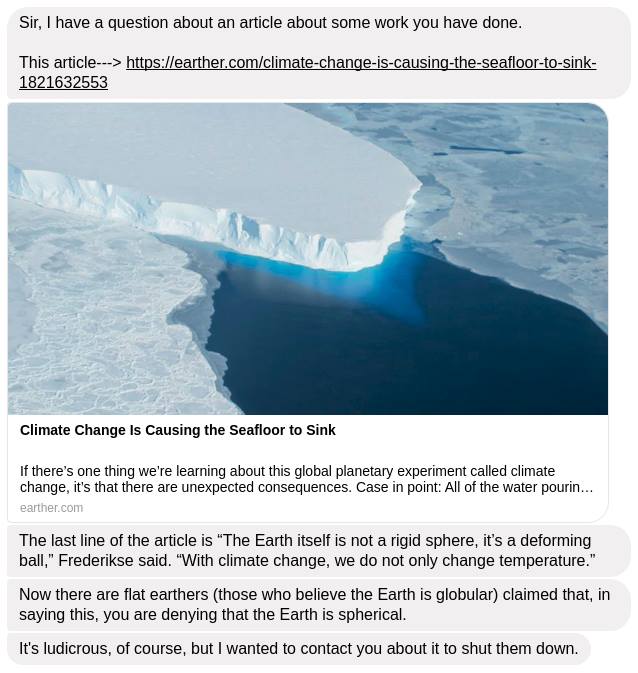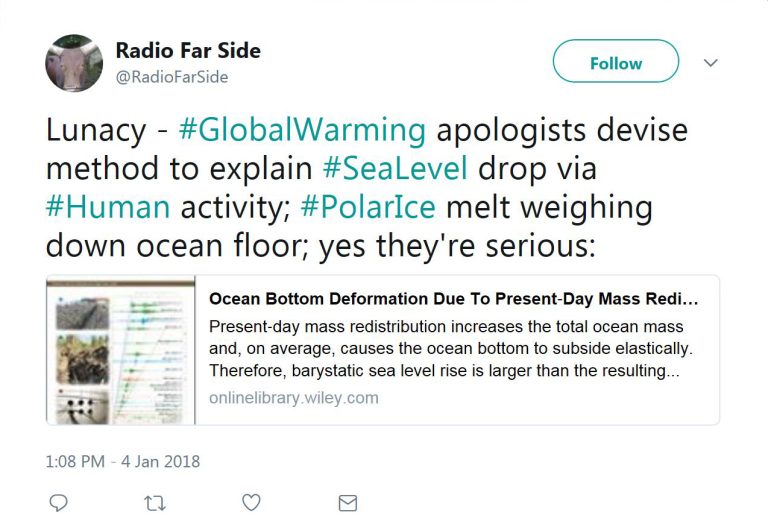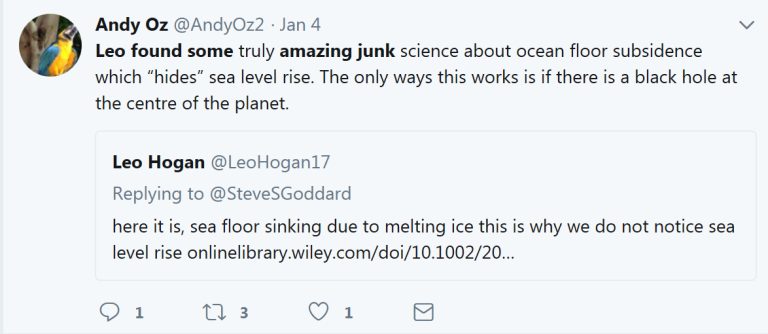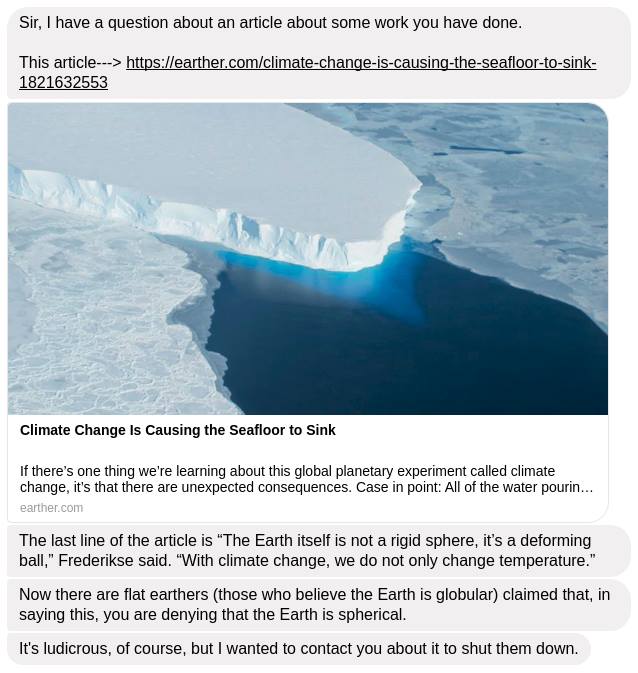Ridiculed by climate sceptics and misinterpreted by alarmists: crazy stories are rampant about Delft research on ocean bottom deformation that found … well, nothing very spectacular really.


The story is a storm in a teacup. The premise of the paper, that appeared in December in Geophysical Research Letters, is benign: ice mass loss results in heavier oceans and as a result, the bottom of the ocean elastically deforms and becomes deeper. The researchers found that around the world over the last two decades, ocean basins have deformed by an average of 0.1 millimetre per year. “This is not much,” says Frederikse. “It is well within the error margins of satellite measurements of sea level rise.”
The Delft researchers, and a colleague from the University of Tasmania, evaluated how much the shape of the ocean bottom may have changed between 1993 – when satellites first started to measure sea level rise – and 2014, taking into account the amount of water added to the ocean from water formerly locked up on land as ice.
“It was very technical work and was meant to help calibrate the satellite measurements. We had no idea that it would cause such stir in the media. Scientists have known for over a century that the weight of the sea deforms the earth. In sea-level rise projections, this effect is already being taken into account. We were able to define it more precisely. That’s all.”
Frederikse even received word that Flat Earthers are using the Delft findings to substantiate their claim that the earth is not a sphere.
“Our article was written for fellow researchers. I think for our next publication we will add a short layman’s summary to avoid crazy stories.”
They didn’t send out a press release, they hardly did anything to bring their article to the attention of a broader audience. A technical article like theirs wouldn’t interest media anyway, Delft remote sensing experts, Dr Thomas Frederikse and Dr Riccardo Riva thought.
How wrong they were. The article ‘Ocean bottom deformation due to present-day mass redistribution and its impact on sea level observations’ was like red rag to a bull to both climate sceptics and environmentalists.


“Scientists in the Netherlands have found a new excuse as to why sea levels are stubbornly refusing to rise in line with Al Gore’s doomsday predictions: ‘ocean bottom deformation’,” Breitbart wrote, calling the researchers ‘alarmists’.
On social media, climate sceptics were also on a roll, calling the scientist ‘Global warming apologists’ and reffering to ‘trully amazing junk science’.


At the other end of the spectrum, Newsweek wrote: “The Ocean Floor Is Sinking Under the Water Weight From Melting Glaciers, and It’s As Bad As It Sounds”. With such lame reporting, it is no surprise that climate sceptics sharpen their knives.
The story is a storm in a teacup. The premise of the paper, that appeared in December in Geophysical Research Letters, is benign: ice mass loss results in heavier oceans and as a result, the bottom of the ocean elastically deforms and becomes deeper.
The researchers found that around the world over the last two decades, ocean basins have deformed by an average of 0.1 millimetre per year. “This is not much,” says Frederikse. “It is well within the error margins of satellite measurements of sea level rise.”


The Delft researchers, and a colleague from the University of Tasmania, evaluated how much the shape of the ocean bottom may have changed between 1993 – when satellites first started to measure sea level rise – and 2014, taking into account the amount of water added to the ocean from water formerly locked up on land as ice.
“It was very technical work and was meant to help calibrate the satellite measurements. We had no idea that it would cause such stir in the media. Scientists have known for over a century that the weight of the sea deforms the earth. In sea-level rise projections, this effect is already being taken into account. We were able to define it more precisely. That’s all.”
Frederikse even received word that Flat Earthers are using the Delft findings to substantiate their claim that the earth is not a sphere.
“Our article was written for fellow researchers. I think for our next publication we will add a short layman’s summary to avoid crazy stories.”
Do you have a question or comment about this article?
tomas.vandijk@tudelft.nl


Comments are closed.